Antipodean Currents: Comic Art in Australia and New Zealand (Part 2)
I originally wrote 'Antipodean Currents' in 2016, after being commissioned to write a brief "layman's history" of comic art in Australian and New Zealand from the late 19th century to the present day. It was originally intended for an academic essay collection, but the project was eventually cancelled, and it never saw print. I subsequently made an illustrated PDF version of this essay available on my Academia page, but this was only available to Academia.edu subscribers. As I've had numerous academics and comic fans/historians ask me to send them copies over the years, I've decided to publish it over several instalments on the Comics Down Under blog and make it available to a wider audience (You can read the first instalment here)
I hope you'll enjoy reading the second installment of "Antipodean Currents".
- Kevin Patrick
Comic Strips and the Popular Press
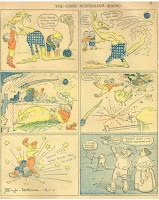 Fig.1When Great Britain granted political independence to the newly proclaimed Commonwealth of Australia in 1901, there followed an outpouring of patriotic magazines, some of which made extensive use of cartoons and comic strips to comment on the vices and virtues of the young nation. Chief amongst these was The Comic Australian (1911-1913), the first magazine to print coloured comic strips illustrated by Australian artists. Oddly enough, it was the poet Hugh McCrae (1876-1958), who drew a pioneering series of comic strips for the magazine, featuring a bushland retinue of kangaroos and koalas, which made the then-innovative use of speech balloons enclosed within formally separated panels (Figure 1) (Note #1). The adoption of Australia’s exotic fauna as anthropomorphic characters would become a recurring motif in Australian comics from this period onwards.
Fig.1When Great Britain granted political independence to the newly proclaimed Commonwealth of Australia in 1901, there followed an outpouring of patriotic magazines, some of which made extensive use of cartoons and comic strips to comment on the vices and virtues of the young nation. Chief amongst these was The Comic Australian (1911-1913), the first magazine to print coloured comic strips illustrated by Australian artists. Oddly enough, it was the poet Hugh McCrae (1876-1958), who drew a pioneering series of comic strips for the magazine, featuring a bushland retinue of kangaroos and koalas, which made the then-innovative use of speech balloons enclosed within formally separated panels (Figure 1) (Note #1). The adoption of Australia’s exotic fauna as anthropomorphic characters would become a recurring motif in Australian comics from this period onwards.The growth of Australia’s suburbs throughout the 1920s, serviced by public transport networks, created a new commuter audience for newspapers and periodicals (Note #2). Newspapers became a more visual medium, subscribing to what historian K.S. Inglis called the ‘law of increasing brightness’, whereby ‘the headlines [grew] higher …the display advertisements more seductive … [and] the photographs larger and more vivid’ (Note #3). Comic strips stood poised to become a vital component in newspapers’ growing emphasis on graphic design and layout, yet some Australian newspapers were slow to embrace the medium. Sydney’s Sunday Times, a self-styled “family newspaper”, published Australia’s first comic-strip supplement for children on 14 August 1921 (Note #4). The austere and conservative Sydney Morning Herald, however, steadfastly refused to print any comic strips until 1945, when it published C.S. Gould’s comic-strip canine, Shaggy (Note #5).
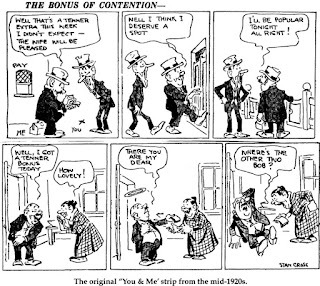 Fig.2Smith's Weekly was a staunchly nationalistic newspaper which traded on its working-class appeal and boasted an impressive roster of cartoonists whose work was considered a cornerstone of the newspaper’s popularity throughout the 1920s (Note #6). Their leading cartoonist was the American-born Stan Cross (1888-1977), who was given samples of the American comic strip, The Gumps, and instructed to devise a similar feature for Smith’s Weekly. Cross responded with You & Me, which became Australia’s first weekly newspaper comic strip upon its debut in August 1920 (Fig.2). The series focused on the portly Mr Pott and his lanky mate, “Whalesteeth”, whose barroom bonhomie frequently degenerated into violent arguments over politics, religion, and other topical issues. Cross ably transferred the domestic situation-comedy premise of The Gumps to a recognisably Australian setting, filtered through a distinctive “Aussie” vernacular, which saw the strip become a mainstay of Smith’s Weekly for twenty years.
Fig.2Smith's Weekly was a staunchly nationalistic newspaper which traded on its working-class appeal and boasted an impressive roster of cartoonists whose work was considered a cornerstone of the newspaper’s popularity throughout the 1920s (Note #6). Their leading cartoonist was the American-born Stan Cross (1888-1977), who was given samples of the American comic strip, The Gumps, and instructed to devise a similar feature for Smith’s Weekly. Cross responded with You & Me, which became Australia’s first weekly newspaper comic strip upon its debut in August 1920 (Fig.2). The series focused on the portly Mr Pott and his lanky mate, “Whalesteeth”, whose barroom bonhomie frequently degenerated into violent arguments over politics, religion, and other topical issues. Cross ably transferred the domestic situation-comedy premise of The Gumps to a recognisably Australian setting, filtered through a distinctive “Aussie” vernacular, which saw the strip become a mainstay of Smith’s Weekly for twenty years.
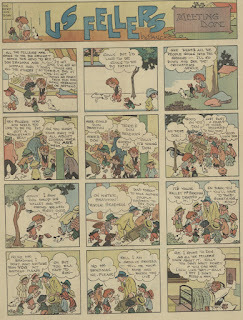 Fig.3It took a red-haired urchin named Ginger Meggs to prove beyond doubt comic strips’ potential value to Australian newspapers. Ginger Meggs was a minor character in Us Fellers, created by James Bancks (1889-1952) for Sydney’s Sunday Sun in November 1921. Meggs, who shirked homework in favour of racing billycarts and getting into fights, gradually became the leading character. Us Fellers (subsequently renamed
Ginger Meggs
) captured the everyday argot of Australian children, but its successful placement with newspapers in Britain, Europe, and the United States during the 1920s suggested that the series’ appeal was universal (Fig.3). Ginger Meggs became the undisputed star of Australian comics, appearing in the annual Sunbeams Book series (1924-1951), and on cinema screens in Those Terrible Twins (1925) (Note #7).
Fig.3It took a red-haired urchin named Ginger Meggs to prove beyond doubt comic strips’ potential value to Australian newspapers. Ginger Meggs was a minor character in Us Fellers, created by James Bancks (1889-1952) for Sydney’s Sunday Sun in November 1921. Meggs, who shirked homework in favour of racing billycarts and getting into fights, gradually became the leading character. Us Fellers (subsequently renamed
Ginger Meggs
) captured the everyday argot of Australian children, but its successful placement with newspapers in Britain, Europe, and the United States during the 1920s suggested that the series’ appeal was universal (Fig.3). Ginger Meggs became the undisputed star of Australian comics, appearing in the annual Sunbeams Book series (1924-1951), and on cinema screens in Those Terrible Twins (1925) (Note #7).In 1927, the Auckland Star published one of New Zealand’s first comic strips, The Tee Wees’ Adventures, a charming “bush fairy” serial by D. Price (Fig.4). This was followed in the early 1930s by two comparable series, each illustrated by female artists: Jocelyn Harrison-Smith’s Ngaio and her Magic Paddle and Avis Acres’ The Adventures of Tink and Wink, the Star Babies (Note #8). Their frequent use of Maori language and iconography demonstrated how Australasian cartoonists frequently drew on indigenous cultures to differentiate their work from British and American comic strips.
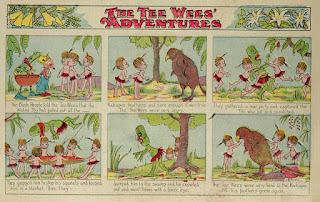 Fig.4
Fig.4
New Zealand’s relatively small publishing industry forced many local cartoonists to cross the Tasman Sea to Australia in search of work, where some would make an indelible contribution to Australian comics throughout the 1920s and 1930s. One notable expatriate artist was Noel Cook (1896-1980), who drew cartoons for the New Zealand Observer, before migrating to Sydney, where he contributed illustrations to The Bulletin and Smith’s Weekly. In 1923, Cook produced Peter and all the Roving Folk for Sydney’s Sunday Times, considered by some to be the world’s first science-fiction comic strip (Note #9).
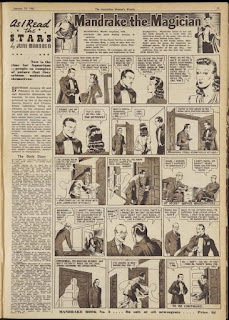 Fig.5Women’s magazines played a pivotal role in cultivating the public’s taste for adventure-serial comic strips.
The Australian Women's Weekly
unveiled a new American series, Mandrake the Magician, in December 1934 (Fig.5).
The Australian Woman’s Mirror
followed suit with its equivalent American comic-strip hero, The Phantom, in September 1936. Both series, created by author Lee Falk (1911-1999), were sold throughout Australasia by the Sydney-based Yaffa Syndicate, which, as the regional representative for King Features Syndicate (US), offered back-dated American comic strips to local clients at artificially low prices (The company sold Mandrake the Magician to the Women’s Weekly for just A£5.00 per full-page episode) (Note #10). Coupled with the perceived dearth of equivalent local content, this pricing strategy allowed American comic strips to gradually dominate the Australasian newspaper market by the late 1930s.
Fig.5Women’s magazines played a pivotal role in cultivating the public’s taste for adventure-serial comic strips.
The Australian Women's Weekly
unveiled a new American series, Mandrake the Magician, in December 1934 (Fig.5).
The Australian Woman’s Mirror
followed suit with its equivalent American comic-strip hero, The Phantom, in September 1936. Both series, created by author Lee Falk (1911-1999), were sold throughout Australasia by the Sydney-based Yaffa Syndicate, which, as the regional representative for King Features Syndicate (US), offered back-dated American comic strips to local clients at artificially low prices (The company sold Mandrake the Magician to the Women’s Weekly for just A£5.00 per full-page episode) (Note #10). Coupled with the perceived dearth of equivalent local content, this pricing strategy allowed American comic strips to gradually dominate the Australasian newspaper market by the late 1930s.To be continued in 'Antipodean Currents', Part 3
Image Sources: Fig.1: (Pikitia Press) ; Fig.2: (The LaTrobe Journal); Fig.3: (20th Century Danny Boy); Fig.4: (From Earth's End); Fig.5: (Trove/National Library of Australia, via Pinterest)
Note #1: John Ryan, Panel by Panel: A History of Australian Comics (Stanmore, NSW: Cassell Australia, 1979), p.13.
Note #2: Ian Gordon, ‘From The Bulletin to Comics: Comic Art in Australia 1890-1950’, Bonzer: Australian Comics 1900-1990s, Annette Shiell, Ed. (Redhill South, VIC: Elgua Media, 1998), pp.2-3.
Note #3: K.S Inglis, ‘The Daily Papers’, Australian Civilization: A Symposium, Peter Coleman, Ed. (Melbourne: F.W. Cheshire, 1962), p.152.
Note #4: R.B. Walker, Yesterday’s News: A History of the Newspaper Press in New South Wales from 1920 to 1945 (Sydney: Sydney University Press, 1980), p.36.
Note #5: Ryan, Panel by Panel, p.57
Note #6: George Blaikie, Remember Smith’s Weekly? (Adelaide: Rigby Limited, 1966), pp.3, 55.
Note #7: Lindsay Foyle, The Most Important Boy in Australia: 75 Years of Ginger Meggs (Strawberry Hills, NSW: Australian Black & White Artists’ Club).
Note #8: Adrian Kinnaird, From Earth’s End: The Best of New Zealand Comics (Auckland: Godwit Books/Random House New Zealand, 2013), p.13.
Note #9: Tim Bollinger, ‘Comics and Graphic Novels – Early Years of Comics, 1900s to 1940s’, Te Ara - The Encyclopedia of New Zealand (4 March 2014) .
Note #10: Denis O’Brien, The Weekly (Ringwood, VIC: Penguin Books Australia, 1982), p.55.



